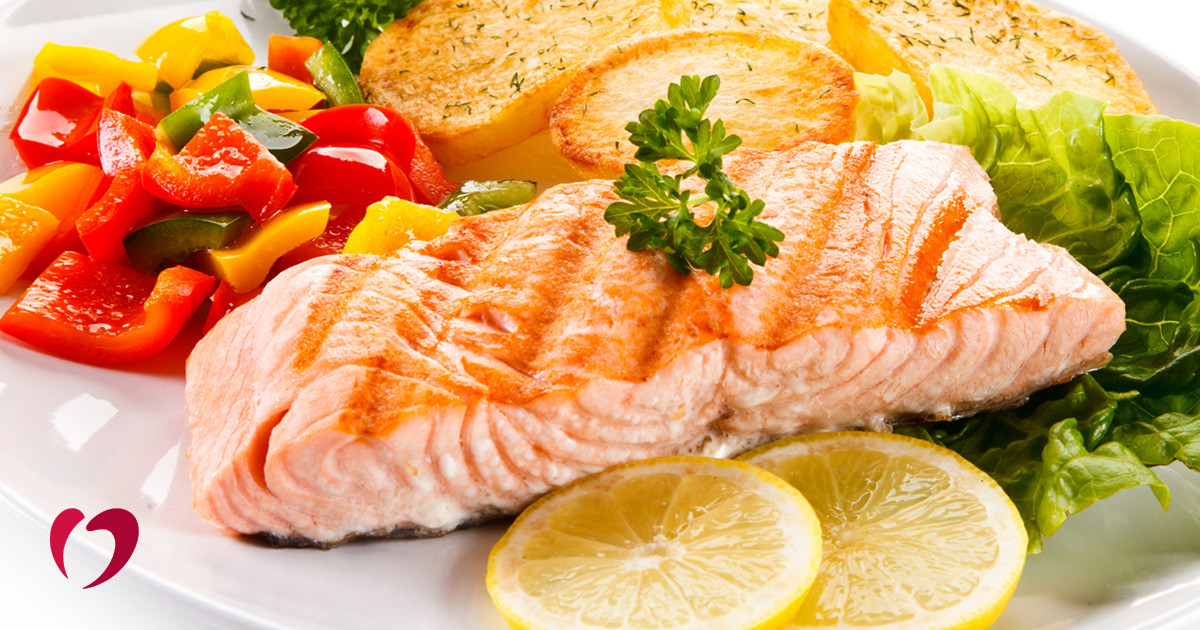Three Tips for Sticking with a Healthy Eating Plan

As the calendar turns to a new year, many people reflect on the past year and set goals or resolutions for the coming year. Weight loss is a common theme this time of year, as people resolve to improve their eating habits and get more exercise.
The Oklahoma Heart Hospital has a team of nutritionists on staff to help patients make the dietary changes necessary for both weight loss and heart health. Their advice to people wanting to lose weight in 2017: know what approach works best for you, make a plan, and don’t get discouraged if you are unable to hit 100% of the plan every day. For most people, they recommend making gradual changes over time to create healthy eating habits. Other people may do better with a plan that overhauls their eating habits at all once, rather than gradually over time. Here are some basic tips to get you started on healthier eating.
Keep a food journal
When nutritionists at Oklahoma Heart Hospital work with patients on dietary changes, the first step is taking a food history to look at food choices and eating patterns of a typical day. You can log your food and beverages for several days using pen and paper or one of several web-based trackers or phone apps (such as LoseIt, MyFitnessPal, and many others). Record what time you eat and how much of each food you eat for meals and snacks.
After recording several days of eating habits, look back at your notes to see any patterns. Do you skip lunch and then end up at the snack machine for a candy bar at 2 p.m.? Do you eat sugary cereal for breakfast and then crash by mid-morning? How many servings of fruits or vegetables do you eat in a day?
According to the National Weight Control Registry, 98 % of people who successfully lost weight and maintained that weight loss reduced their caloric intake. Online programs and phone apps will automatically calculate the total calories of the foods you enter, which can help you see your daily calorie intake and make adjustments as needed.
Aim for a balanced plate at every meal
We all know we should eat a balanced diet, but what does that mean exactly? It means lean protein, vegetables, fruit, and whole grains, plus low-fat dairy. Fruits and vegetables provide important nutrients plus fiber that helps you feel full longer. Whole grains add to your daily fiber intake, and lean protein helps maintain muscle and keeps you satisfied longer. A balanced plate also means you’re getting the right mix of carbohydrates, protein, and fat to keep your body functioning at its best.
Start with a 9-inch dinner plate and fill half of it with non-starchy vegetables, such as steamed broccoli, salad, roasted cauliflower, or sautéed spinach. You could also add a fresh fruit for part of that half of the plate. Then, split the other half of the plate in two, so that you have ¼ of the plate filled with lean protein (such as chicken or fish) and ¼ of the plate filled with a whole grain (such as brown rice, high fiber bread, or whole grain pasta). Add a serving of low-fat dairy, such as skim to 1% milk or plain nonfat Greek yogurt, and you have a balanced plate. Need a visual? Check out MyPlate.gov for helpful resources on building a balanced plate.
Eat something every three to four hours
When you’re trying to cut calories and lose weight, it’s important to eat a meal or a snack every three to four hours to help stabilize blood sugar levels. Every time you take in calories, your blood sugar increases and then slowly decreases over several hours. If you’re eating a balanced portion of “slow” carbs, protein, and fat every few hours, your blood sugar levels will stay relatively stable throughout the day. But if you eat sugary foods, the level spikes faster and drops faster, which triggers hunger and could leave you reaching for another candy bar mid-afternoon.
For healthy snacks, consider a small portion of nuts (but watch the serving size carefully), a piece of fruit, some baby carrots or other crunchy vegetables with Greek yogurt dip, or whole-grain crackers with reduced fat cheese. If you’re on the go, a banana or an apple makes a quick and easy snack, or stock up on pre-portioned foods such as healthy nuts or low-fat mozzarella cheese sticks. Stocking your desk with healthy snacks takes a little more planning than running to the vending machine, but it’s an important step to stay on track with healthy eating.
If losing weight is on your list of 2017 resolutions, try setting smaller incremental goals for weight loss and healthy eating habits. By following the tips above for improving your overall eating habits and adding more physical activity to your day, you’ll create a solid foundation for healthy weight loss.
Have questions about how excess weight can impact your heart health? Do you have a heart condition that could be improved by losing weight? Contact the Oklahoma Heart Hospital today for more information or to schedule an appointment with one of our physicians.
